We are blessed with good weather today at Terumbu Semakau. It was rather hot and sunny, very different from what I experienced yesterday at Labrador rocky shore.
The word "terumbu" describes a reef that is only visible at low tide. Hence "Terumbu Semakau" refers to a submerged reef next to Semakau Landfill. You can get a better visual idea from this image.
This is my first time visiting a submerged reef on a late afternoon and the experience is very different. The animals are so alive and difficult to photograph. Not to worry, I still managed to get some good images of the animals I saw on the reef.
The sky was very clear as we set off from Marina at Keppel Bay on a boat by
Summit Marine. Alex, the owner of the boat is a very nice and friendly man whom we are very grateful to have very time we go out on an amphibious landing trip to the southern shores.
 |
| View from the lobby at Marina at Keppel Bay |
 |
| On our way to location |
I've only managed to photographed 2 crabs. The
blue swimming crab (
Thalamita sp.) and the
hairy crab. There were many crabs seen but they were too active and alert. Many of the crab were out feeding on the reef.
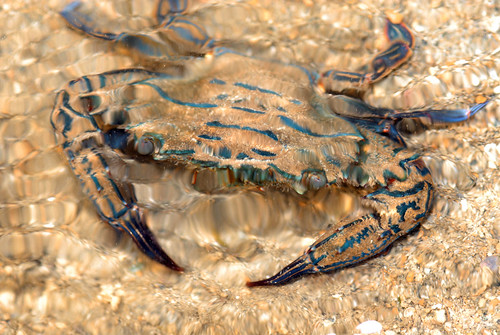 |
| Blue swimming crab |
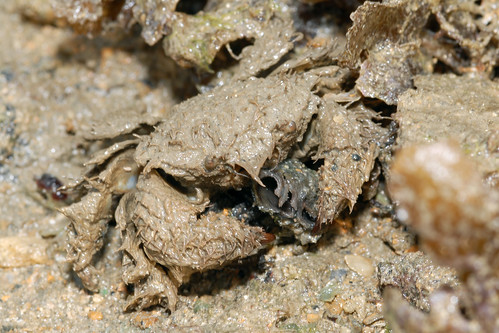 |
| hairy crab |
There were many fish hiding in under sponges, sargassum seaweeds and swimming about playing hide and seek with us. Many of them dart into hiding quickly while some camouflaged among plants and animals.
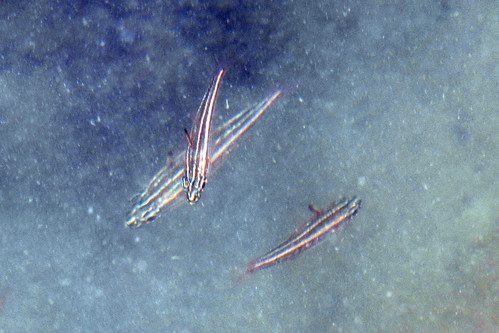 |
| Chequered cardinalfish |
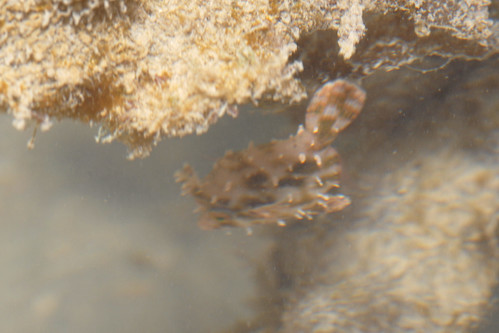 |
| Seagrass filefish |
I also saw some pretty marine slugs and flatworms.
At one location, I saw 3 black-margined nudibranch close to each other. Were they trying to mate?
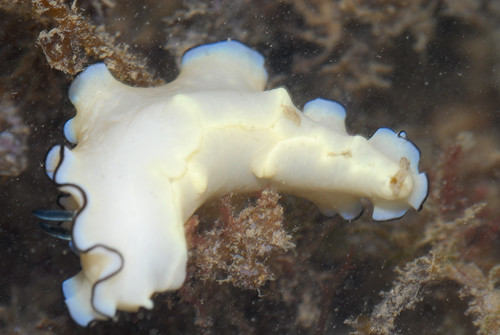 |
| Black-margined nudibranch (underside) |
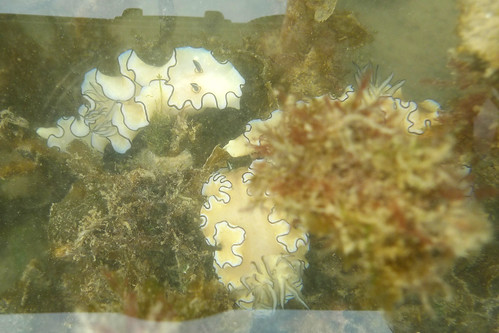 |
| 3 of them at one spot. |
2 pretty flatworms:
Fine-lined flatworm (Family Pseudocerotidae) and
Persian carpet flatworm (
Pseudobiceros bedfordi)
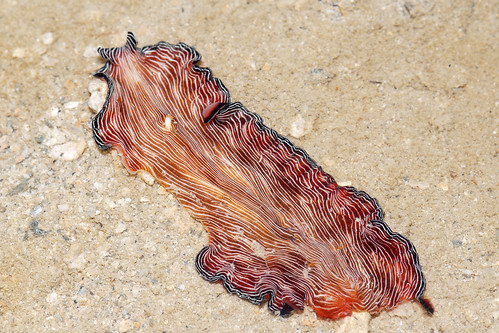 |
| Fine-lined flatworm |
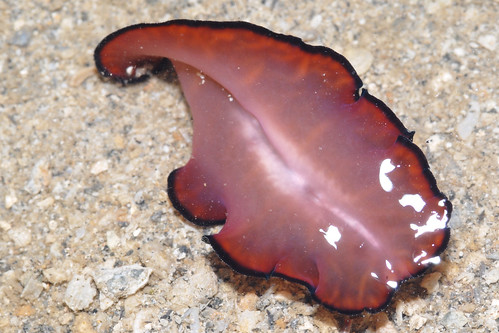 |
| Persian carpet flatworm (Underside) |
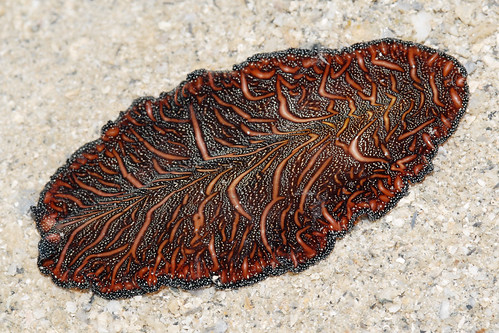 |
| Persian carpet flatworm |
Ria managed to find the
tiger cowrie (
Cypraea tigris) at the location where it was seen during the pervious trip here. There was a request from the Raffles Museum of Biodiversity Research for a specimen of the tiger cowrie. I'm glad we found it in this trip. Sadly, the animal refuse to loosen its grip in the container for me to take a better picture of. I'll just have to make do with it in the container.
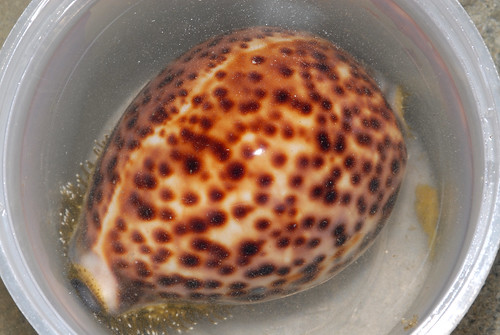 |
| Tiger cowrie in the container |
There were many
magnificent anemones (
Heteractis magnifica) on Terumbu Semakau and some had their body column stretched as the tide moves out. The magnificent anemones attach themselves to large boulders of dead corals or solid objects, which could of a height from the ground. When the tide goes out, the numerous tentacles on the oral disk causes the animal to fall downwards. In one of the magnificent anemones, I saw a tiny anemonefish. My guess is the
tomato anemonefish (
Amphiprion frenatus), looking that the dark patch after the stripe.
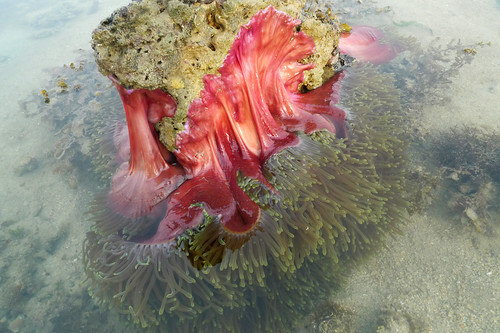 |
| A huge colony of magnificent anemone |
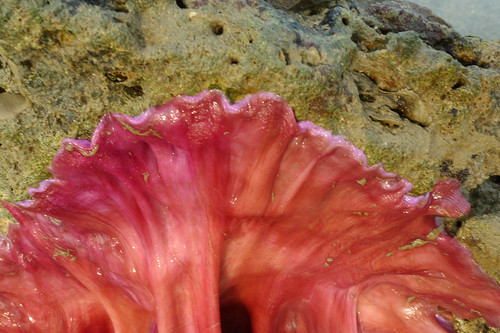 |
| How the anemone attaches itself to the solid object |
 |
| One of the magnificent anemone retracts into its body column |
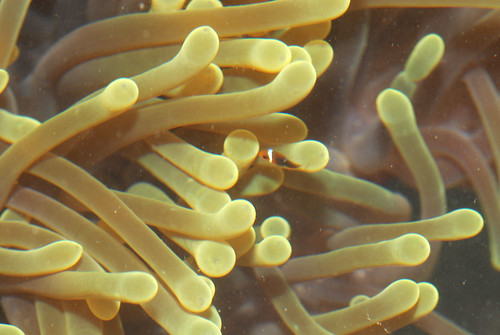 |
| Can you spot the tomato anemonefish? |
Here's a video of the mangificent anemone.
We also saw the
fire anemone (
Actinodendron sp.). The fire anemone can deliver a painful sting when touched. We should not touch any animals we are not familiar with.
 |
| Fire anemone |
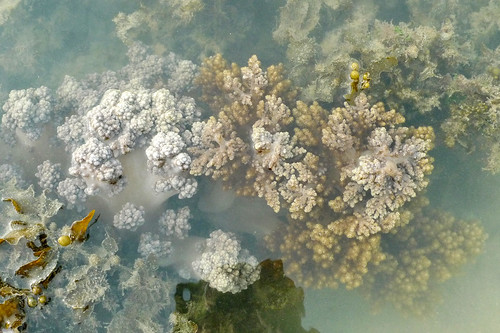 |
Left: Asparagus flowery soft coral
Right: Long-stemmed flowery soft coral |
 |
| Damaged branches of asparagus flowery soft coral? |
 |
| Torch anchor coral |
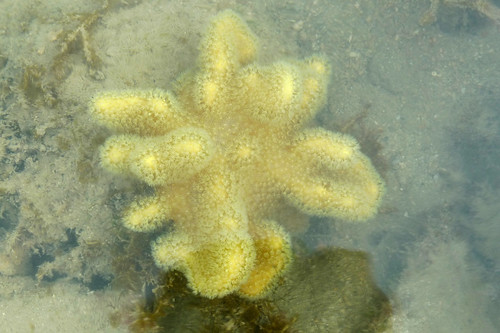 |
| Yellow tiny goniopora coral |
 |
| Brown tiny goniopora coral |
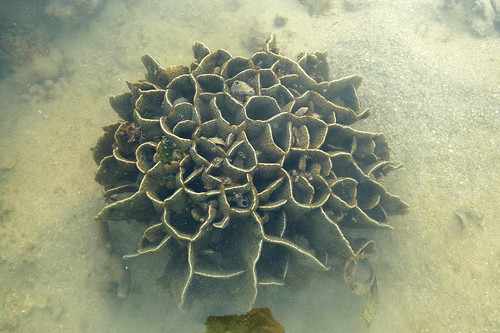 |
| Lettuce coral |
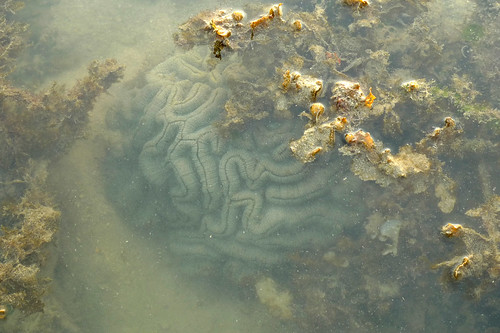 |
| Brain coral? |
As the sun starts to set, the tide slowly starts to turn. This is an indication for us to leave the reef.
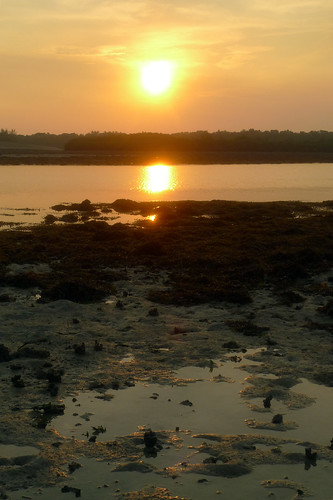 |
| Setting sun on Terumbu Semakau |
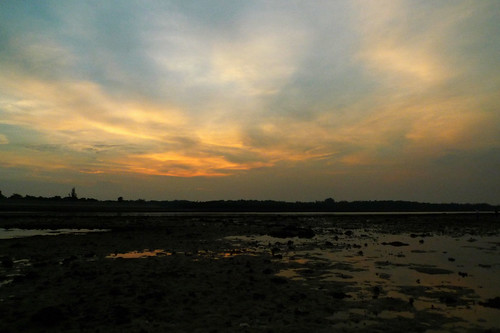 |
| Beautiful sunset on Terumubu Semakau |
While waiting for the dinghy to make a second trip to the reef to bring us back, Kok Sheng found an
alicia anemone (
Alicia sp.). The anemone has a beautiful name but it has nasty stings. It has pretty pink lines on its tentacles.
 |
| Alicia anemone |
It was a great trip with good weather, though the return journey to the marina was rather choppy.
Today is the second day of the evening shore trips for this month. There is St. John's Island trip tomorrow and Pulau Hantu on Saturday. Hope the weather stays this good.
Other posts about this trip:




















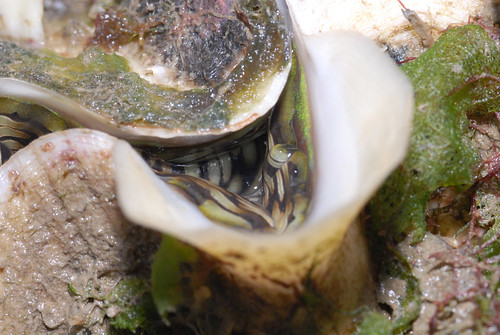










No comments:
Post a Comment